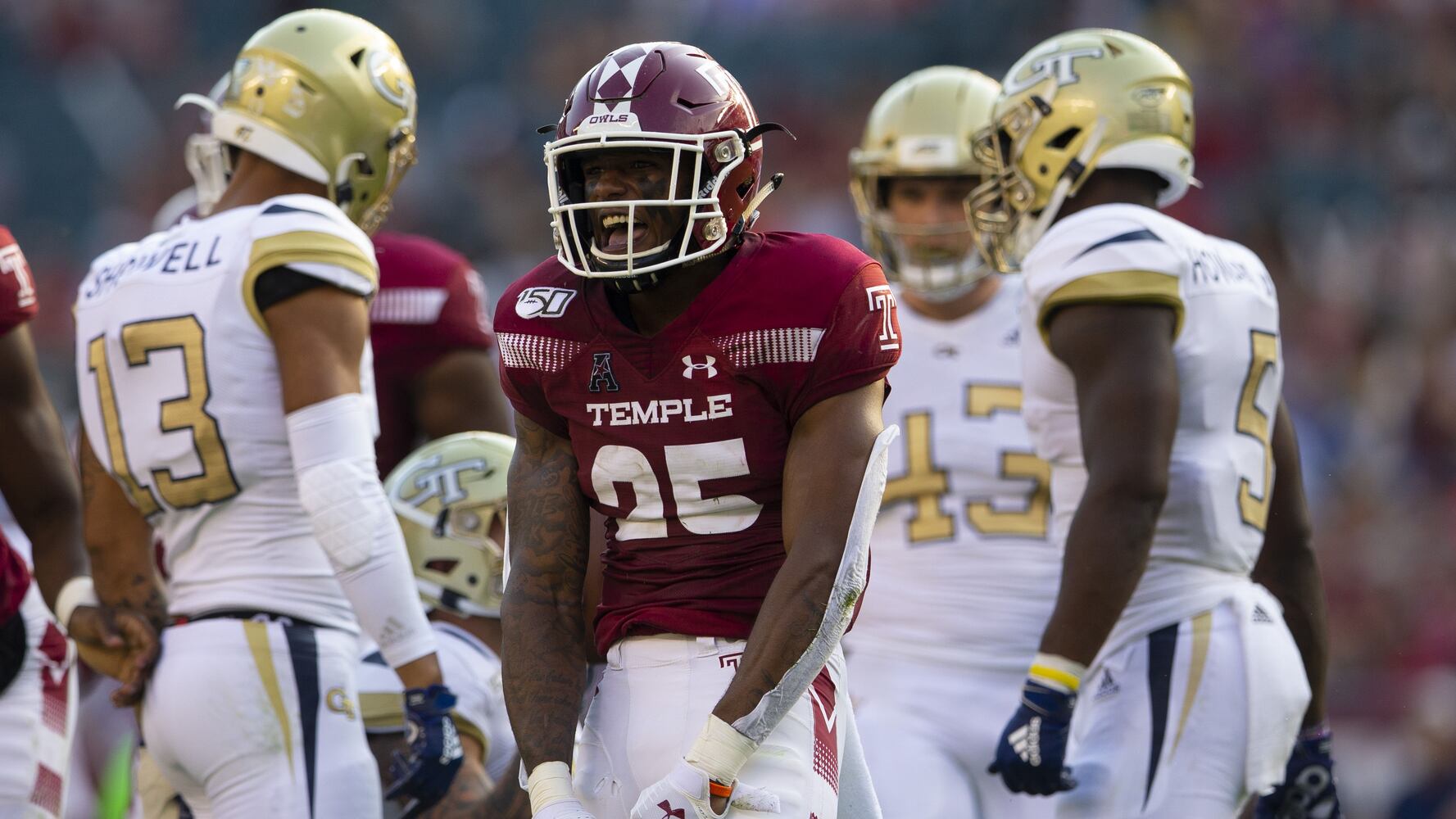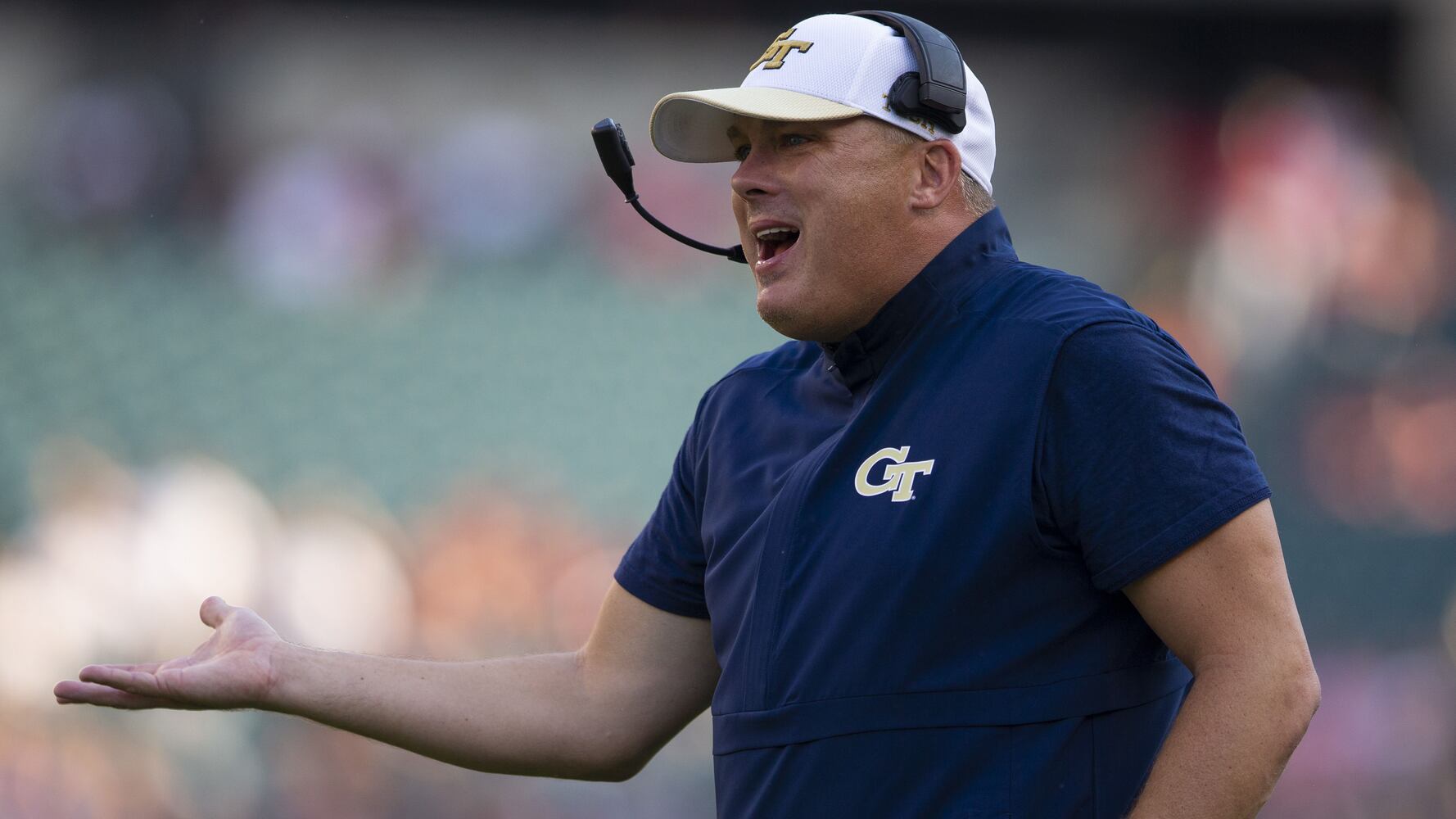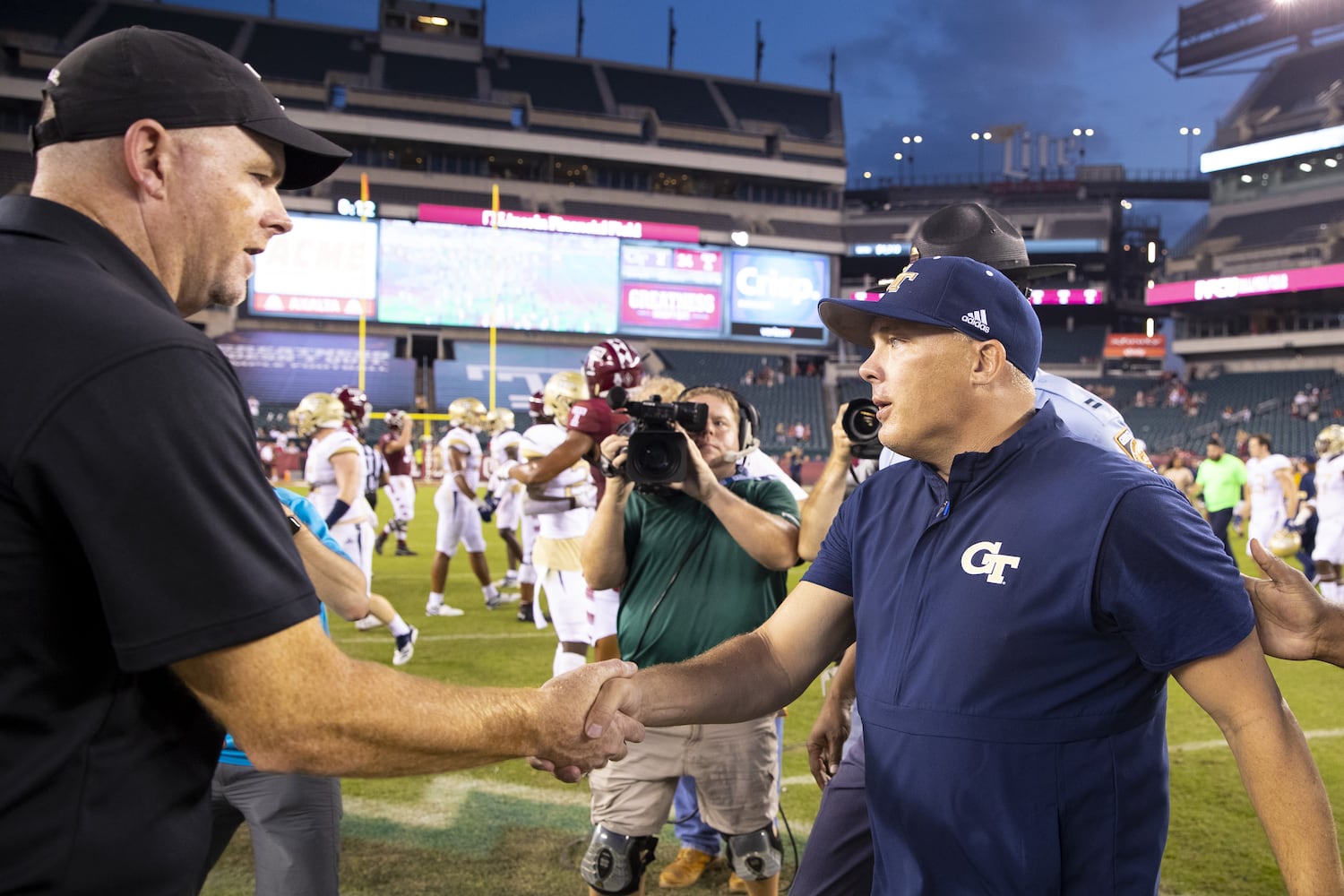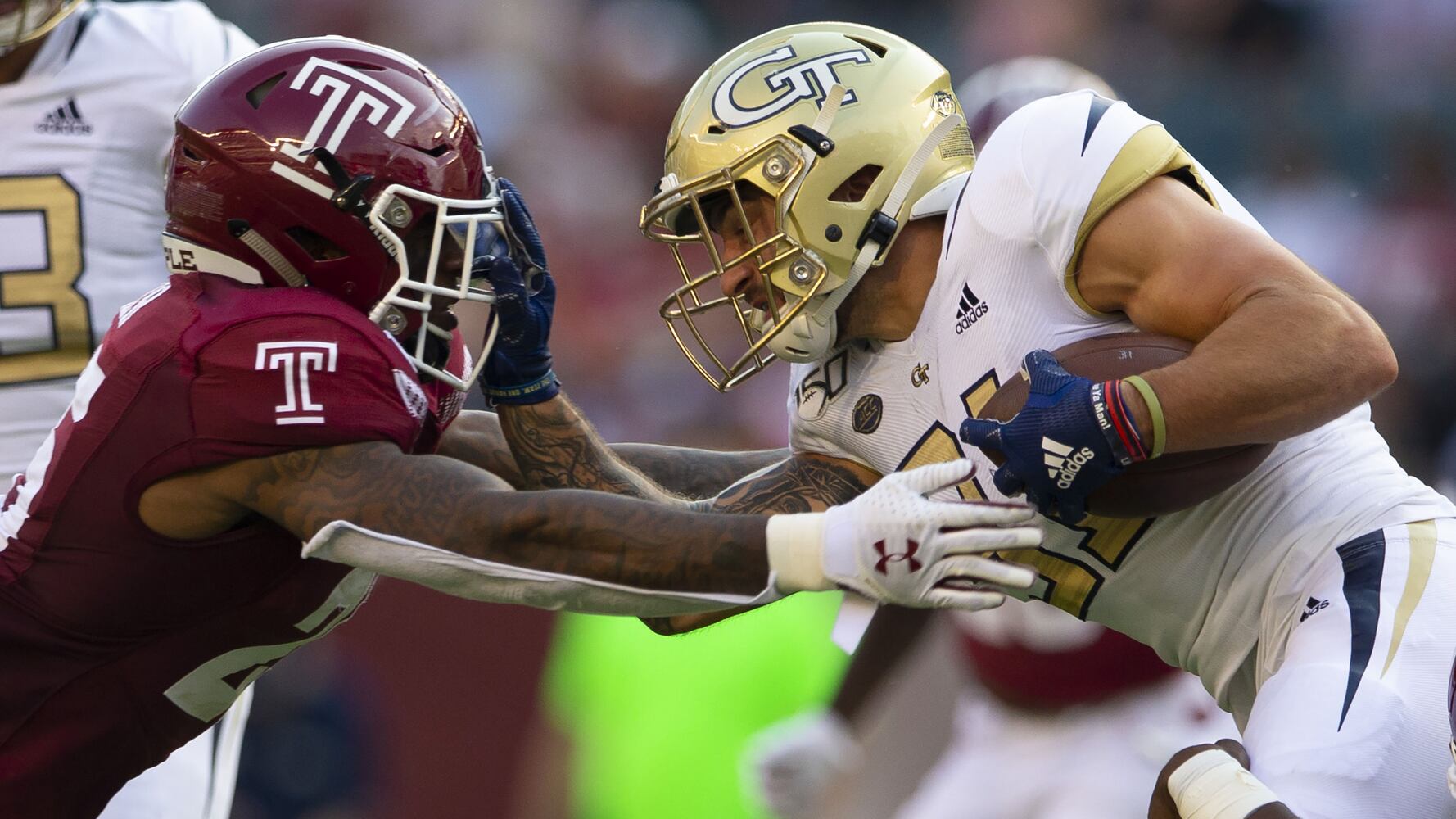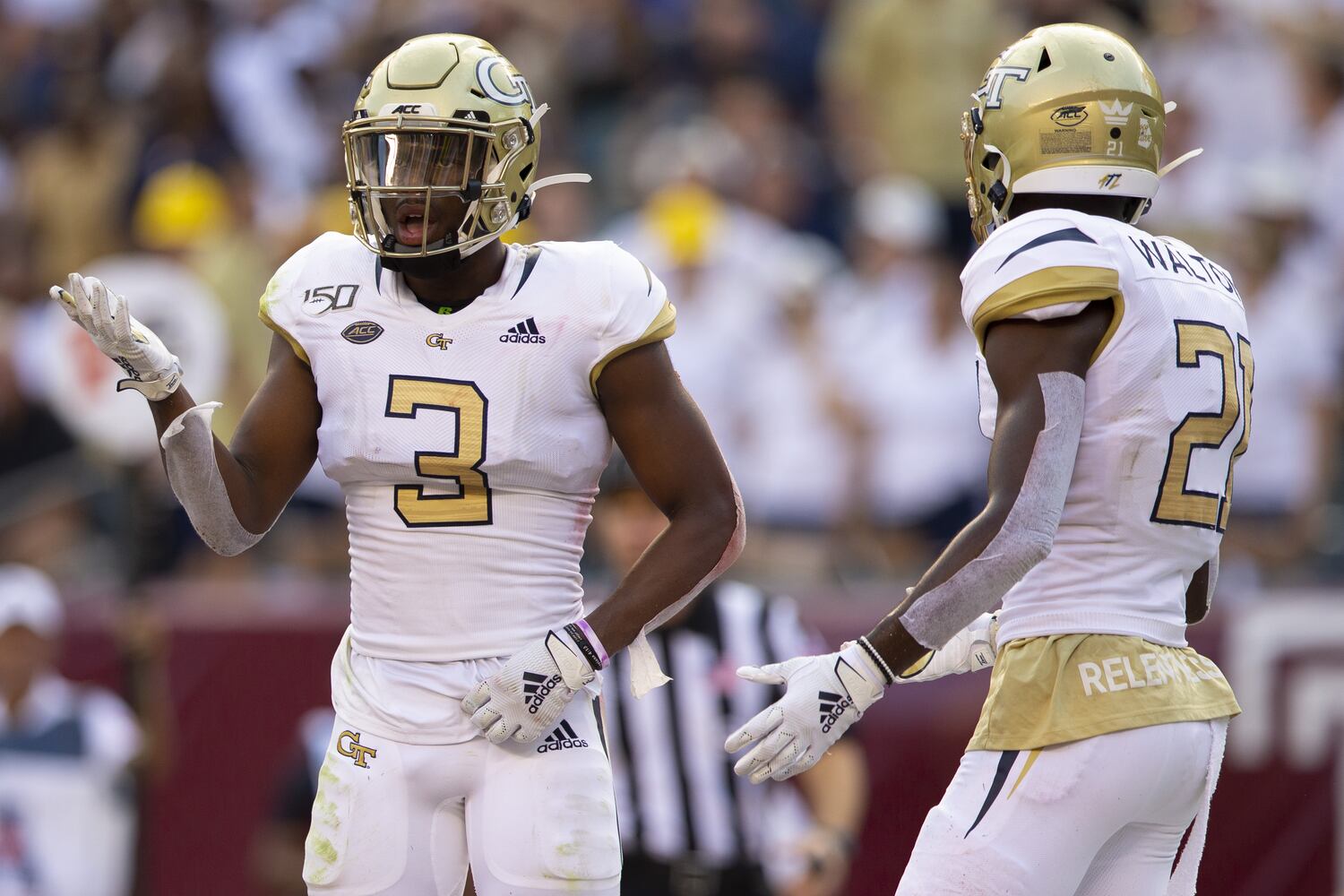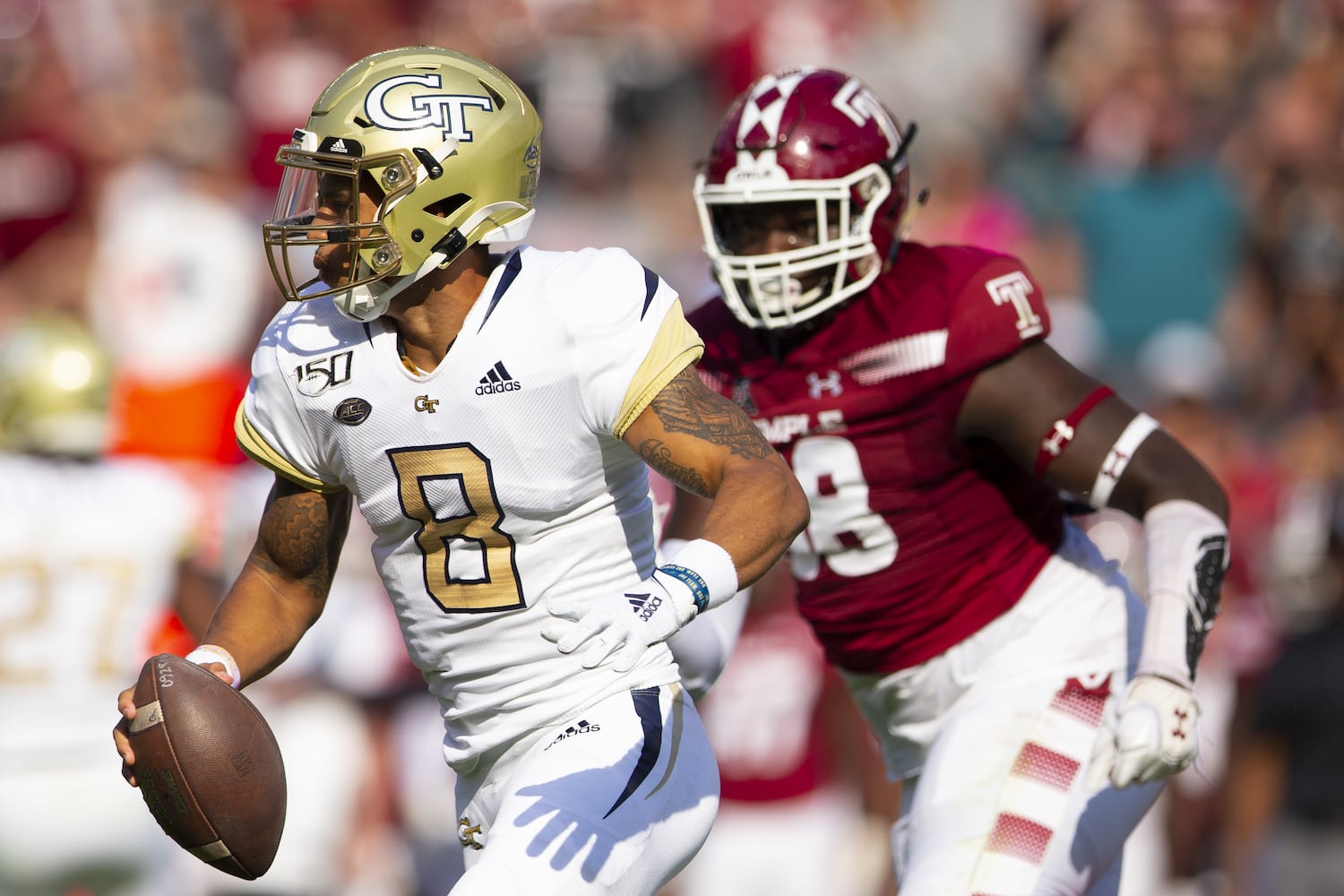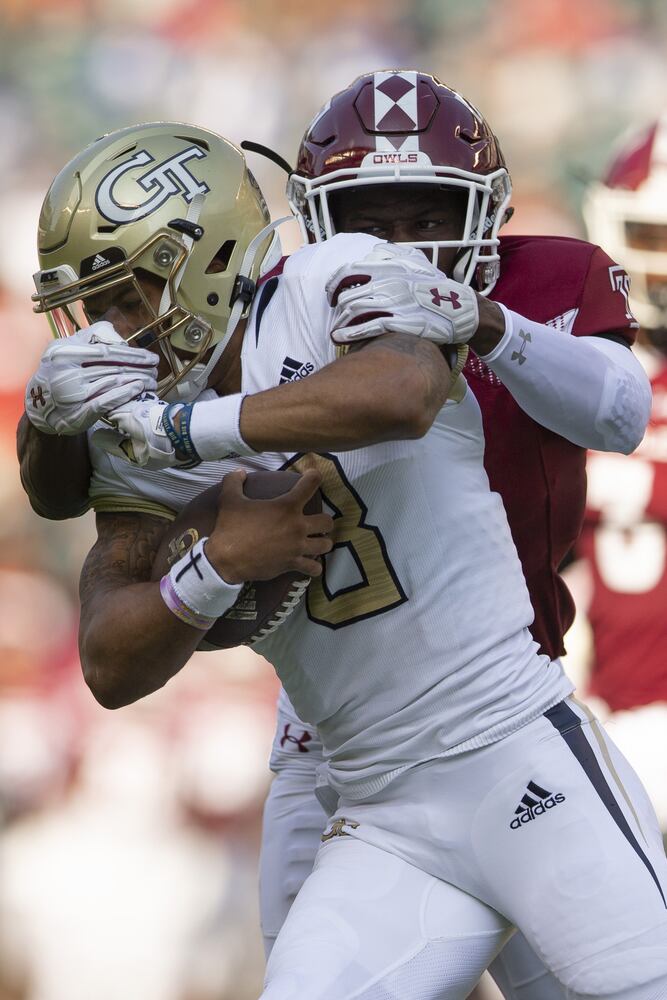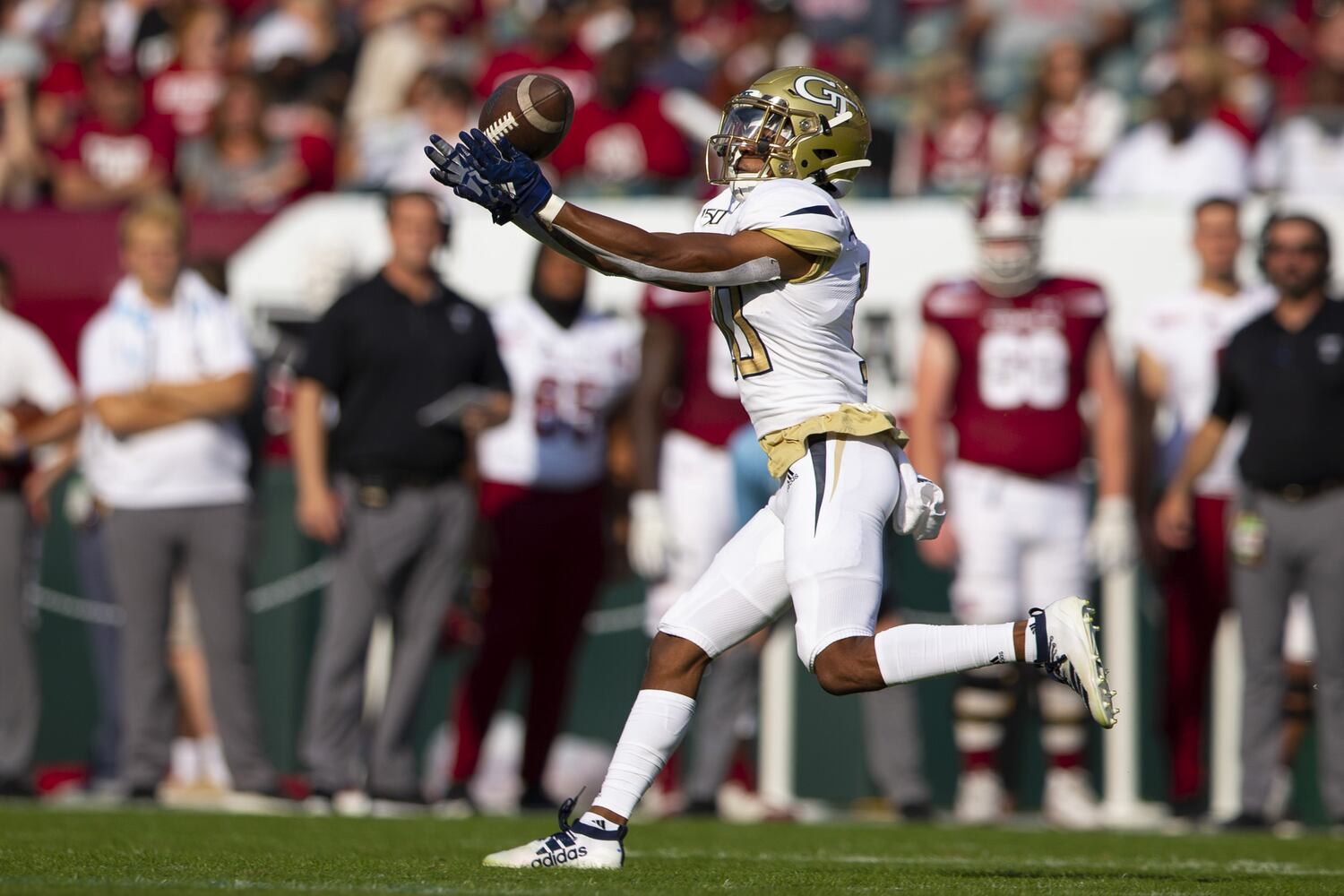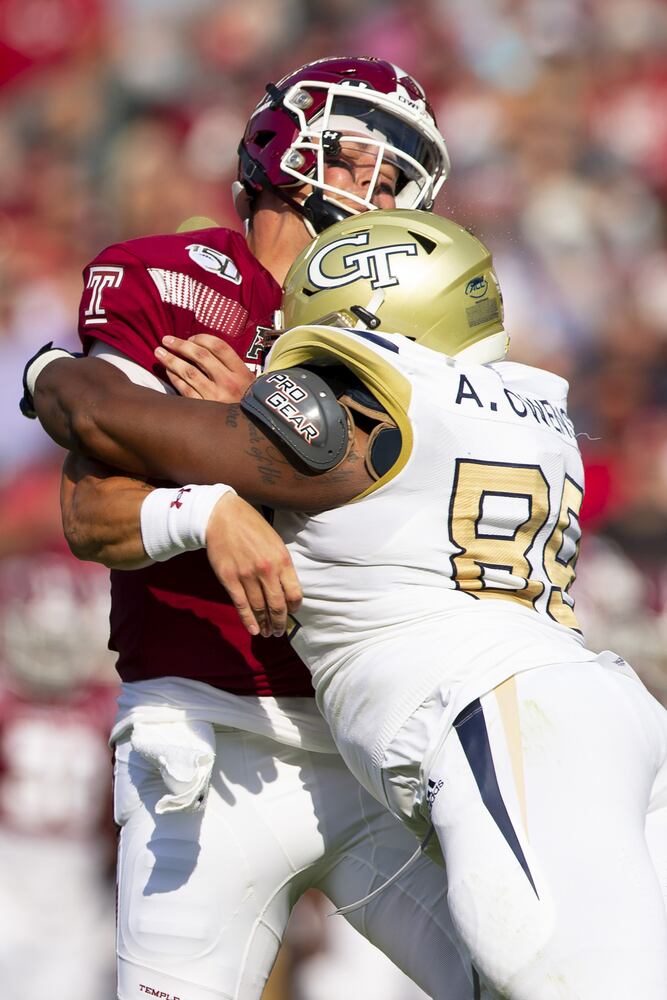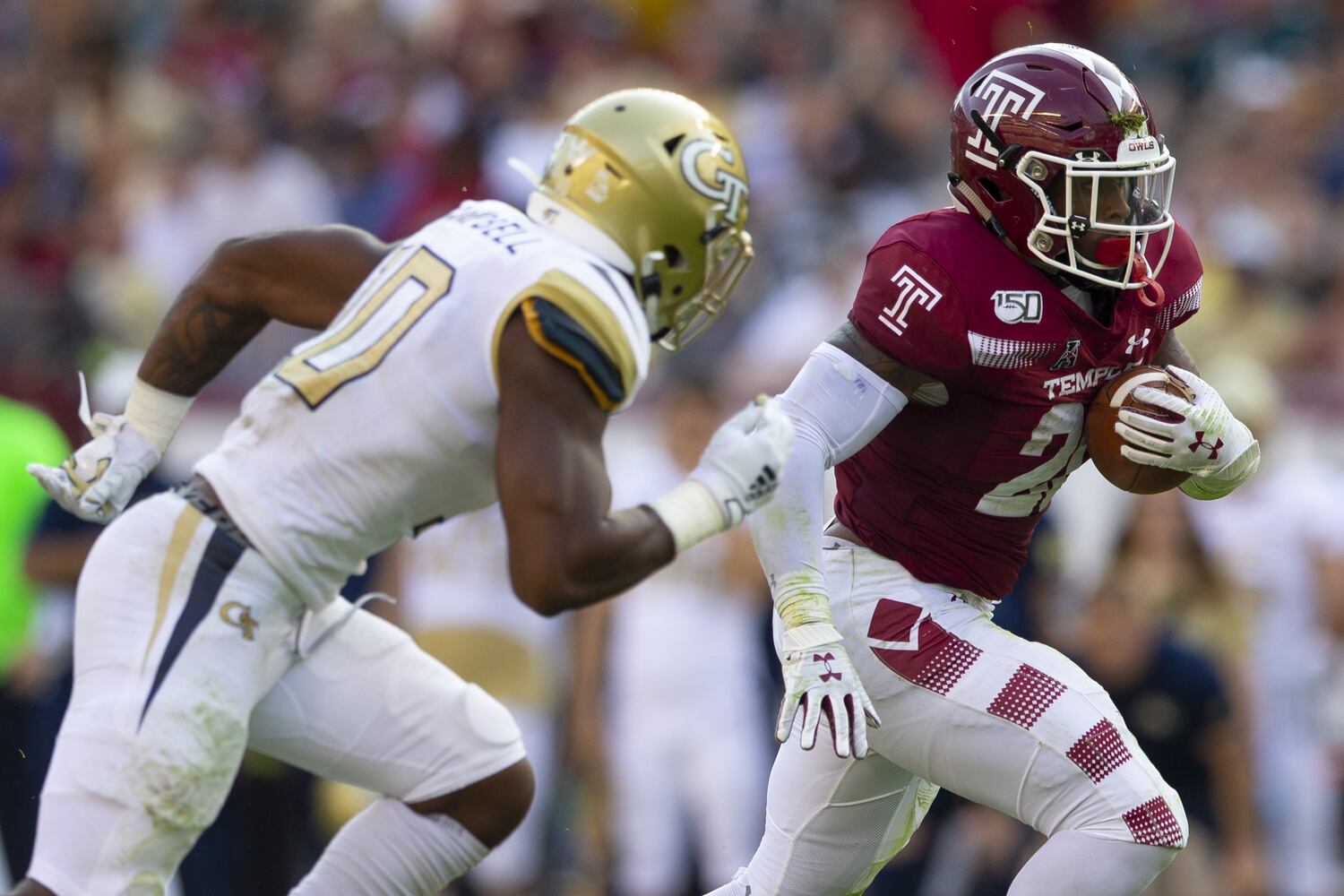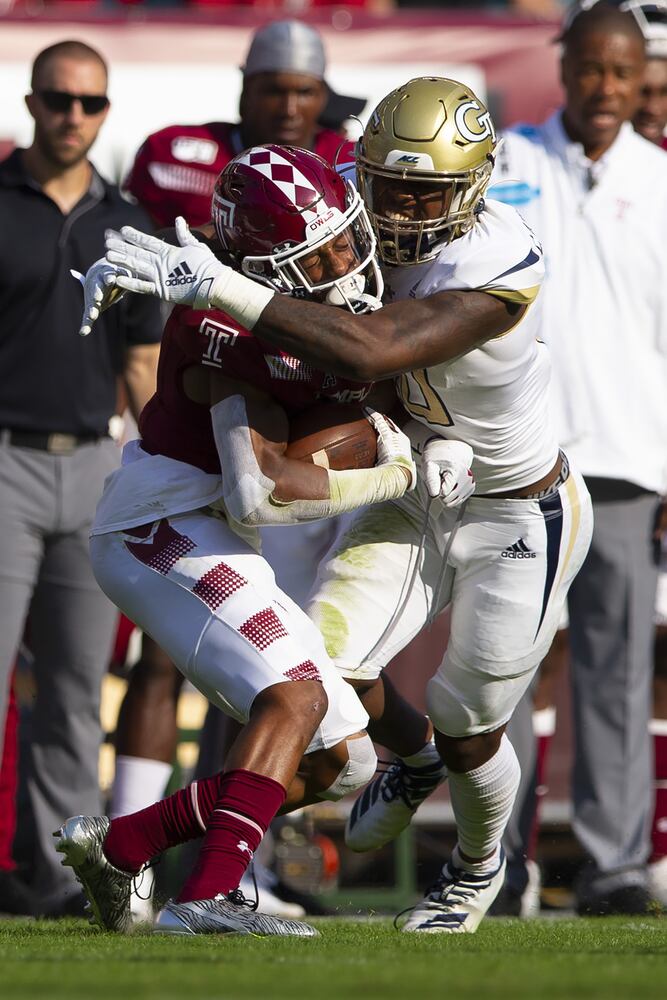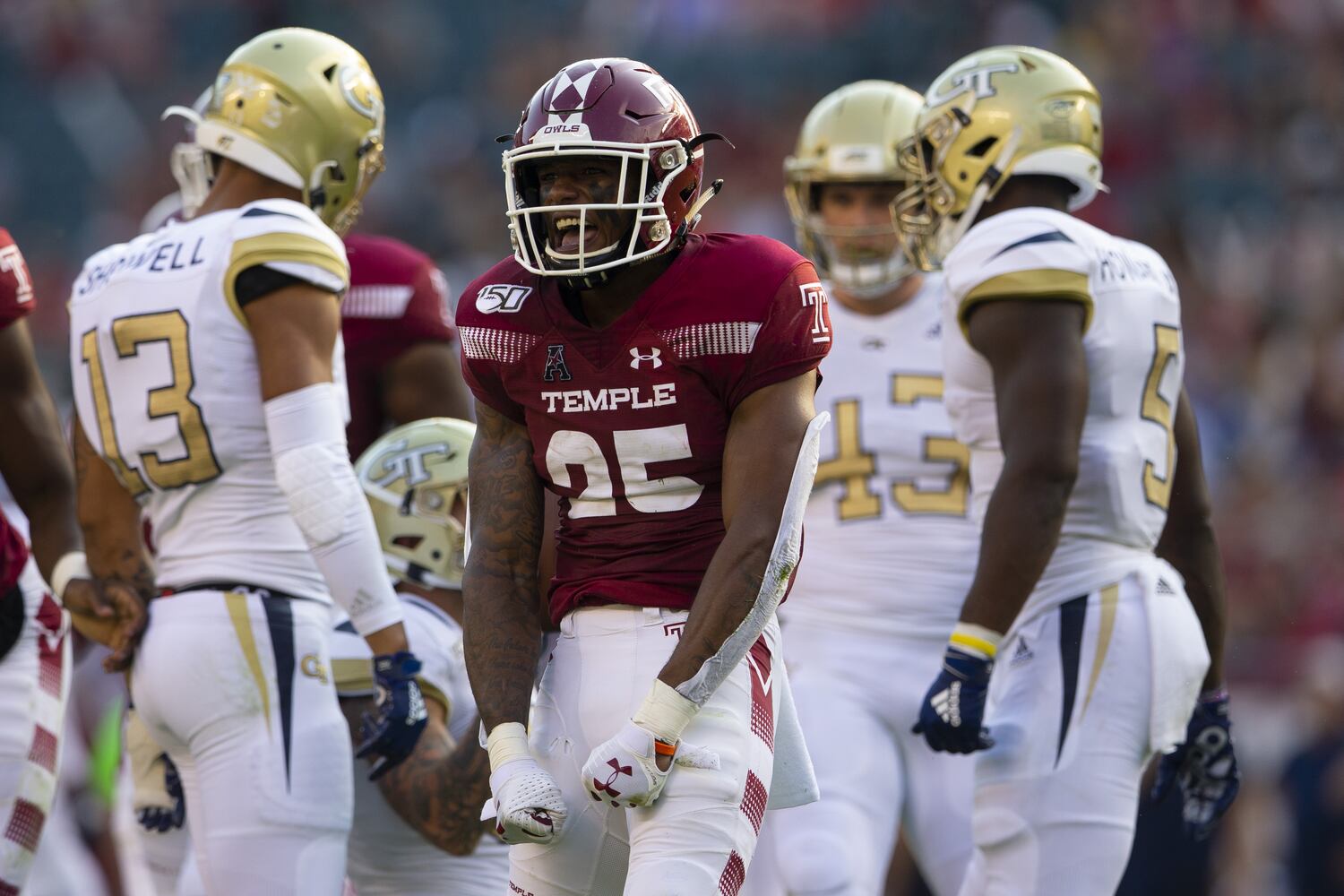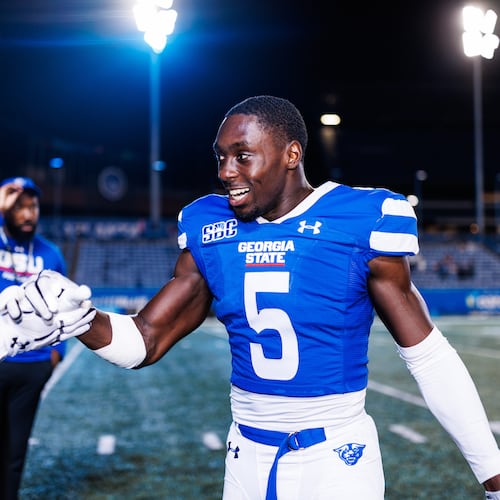Georgia Tech fell hard Saturday, losing 24-2 to Temple in Philadelphia. It was the Yellow Jackets' lowest scoring output against a team outside of the five power conferences since getting shut out by South Carolina (then an independent) in 1977.
Five takeaways from the game:
1. Rough day on offense
The Jackets put up a horrendous third-down efficiency number, 2-for-14. But that doesn’t tell the whole story.
Of 69 plays not counting a kneel-down to end the first half, 35 of them produced one yard or less. With failures across the offense, the Jackets weren’t consistent enough to put themselves in makeable third-down situations. Of 14 third downs, the Jackets had third-and-7 or longer 10 times. Given the difficulties Tech was having both in protecting the pocket and throwing downfield, that was untenable.
» MICHAEL CUNNINGHAM: Tech's offense struggling
While only the defense’s safety prevented the first shutout since 1997, the Jackets did have some successes with the ball. Oliver fired an on-target downfield ball to slot receiver Ahmarean Brown for a 42-yard gain in the first quarter. Tech advanced inside Temple’s 35-yard line five times, although two of them were in the fourth quarter when the game had already been decided.
“We convert those times in the red zone, it’s a different game,” Tech head coach Geoff Collins said.
2. Pass-protection failures costly
The plays on which quarterback Tobias Oliver’s two fumbles occurred illustrated the difficulties that the offensive line had and their role in the outcome.
On Oliver’s second-quarter fumble at the goal line, an apparent coverage error (tight end Tyler Davis was triple covered) enabled running back Jordan Mason to slip out of the backfield with only linebacker Isaiah Graham-Mobley accounting for him in a wide-open space. Had Oliver had the time, he could have made an easy throw to Mason for a potential race to the goal line with Graham-Mobley.
But left tackle Zach Quinney was beaten on a speed rush by defensive end Quincy Roche, flushing Oliver out of the pocket. Oliver could well have scored anyway, but was stripped of the ball and Temple recovered, one failure in execution leading to another.
The play in which Oliver fumbled again was similar. Running back Jamious Griffin was open on the right side with space in front of him, although Oliver appeared to be looking left. Pass-rush pressure coming from defensive end Zach Mesday against right tackle Jared Southers chased out Oliver, leading to the fumble, which was returned 74 yards for a touchdown.
3. More injures on the line
Injuries continued to take healthy bites out of the Tech offensive line, which even as the season began a month ago was thin and inexperienced. Center Kenny Cooper left the game with an undisclosed injury and did not return, leaving walk-on William Lay to finish. Mason also left the game with an apparent leg injury and didn’t return.
After the game, Collins was more expansive on the topic of injuries than usual, allowing that the team “is probably going to lose (Cooper) for awhile.” If Collins was hinting at a season-ending injury, Cooper can return in 2020 as he can claim this season as a redshirt season (Saturday was his fourth game) and return next year as a redshirt senior.
Cooper is a two-year starter at center who has earned offensive line coach Brent Key’s praise for his toughness. His injury follows the season-ending broken-fibula injury suffered by offensive tackle Jahaziel Lee. It did also coincide with guard Connor Hansen’s first game and start of the season after suffering a shoulder injury in the spring that kept him out through preseason practice.
Tech appears to be now down to nine healthy scholarship offensive linemen, including two redshirt freshmen who have yet to play a snap.
4. Defensive play holds up
Easily overlooked from Saturday’s game is the fact that defensive coordinator Andrew Thacker’s unit largely did its job. Temple scored 17 points on offense in 10 possessions, not including the final game-ending drive. The work of punter Pressley Harvin and the punt unit aided in field position.
The defense “played really well,” Collins said.
Pass coverage, save two poorly defended passes that went for 38 and 26 yards, was highly effective. Temple quarterback Anthony Russo was averaging 315 passing yards and completing 60 percent of his passes prior to Saturday. Against Tech, he was 9-for-22 for 127 yards, sometimes feeling pressure. Cornerback Zamari Walton had two pass breakups.
The Owls did break from tendency and went run-heavy, a ploy the Jackets had trouble stopping. The Temple offensive line repeatedly won at the point of attack, leading to 195 rushing yards on 49 carries, both season highs for the Owls.
Collins said that Temple used a grouping with two tight ends far more often than it had previously.
5. Collins’ response
Collins was his resolutely positive self after the game, but acknowledged the improvement that needs to be made.
“I think very soon, you’re going to see the fruits of (the team’s) labor. Obviously, after two years of investing (in) that team we just played, the residual effects of those relationships and those lessons have paid off for those guys. We’ll keep getting better at Georgia Tech and we’ll start to see those results even stronger moving forward.”
Of quarterback Tobias Oliver and his two lost fumbles: “He’s one of the most competitive players that I’ve ever coached. I know he wishes he could have maybe accelerated a little more toward the end zone, but when he gets that chance again, he’s going to make sure we possess the ball and get the touchdown.”
Another comment: “We have to focus on ourselves (rather than point fingers). I’ve got to look internally for myself. Our offensive and defensive staffs will look internally at what we can do to help our players — that’s a very unique roster — how we can help them put them in positions to have a lot of success and individually, our players have to perfect a process so they can play well on Saturdays.”
About the Author
Keep Reading
The Latest
Featured
